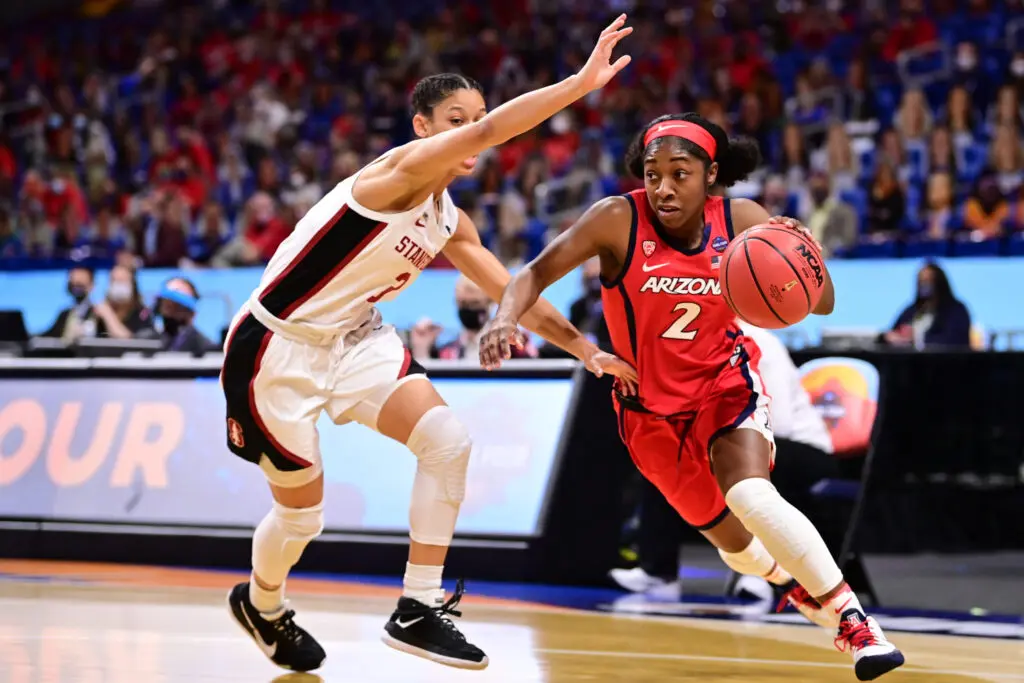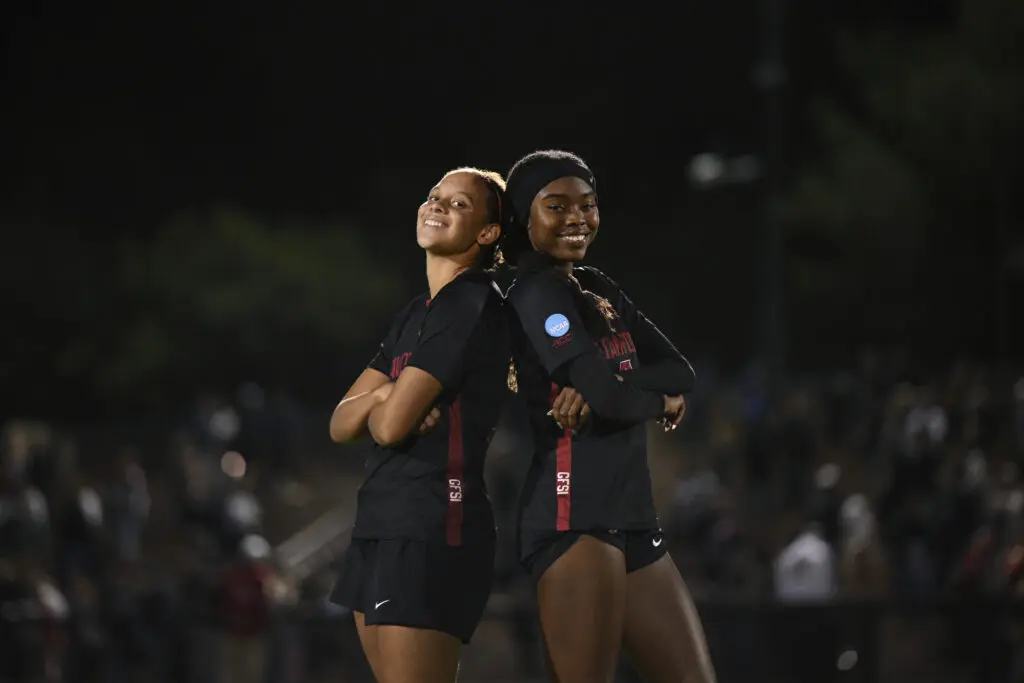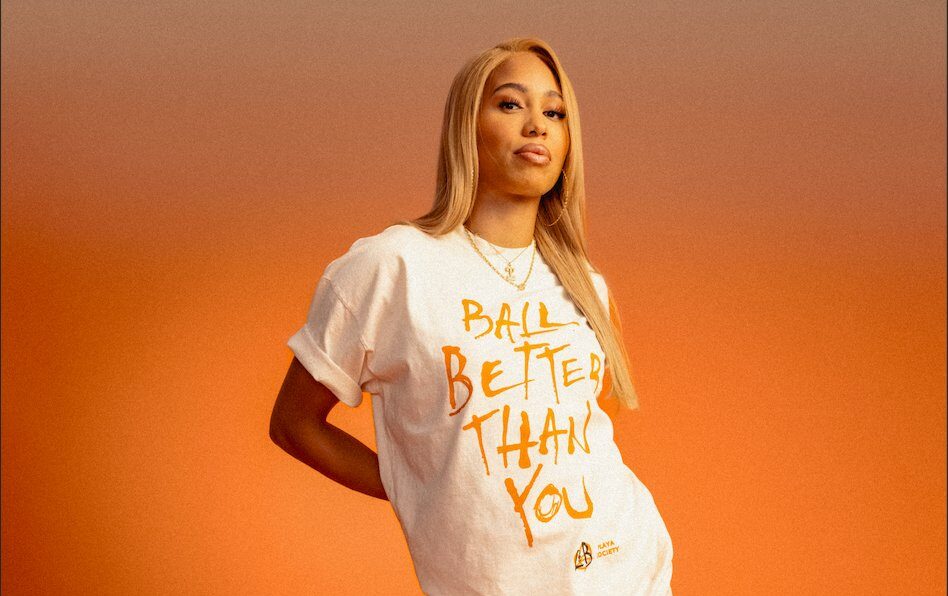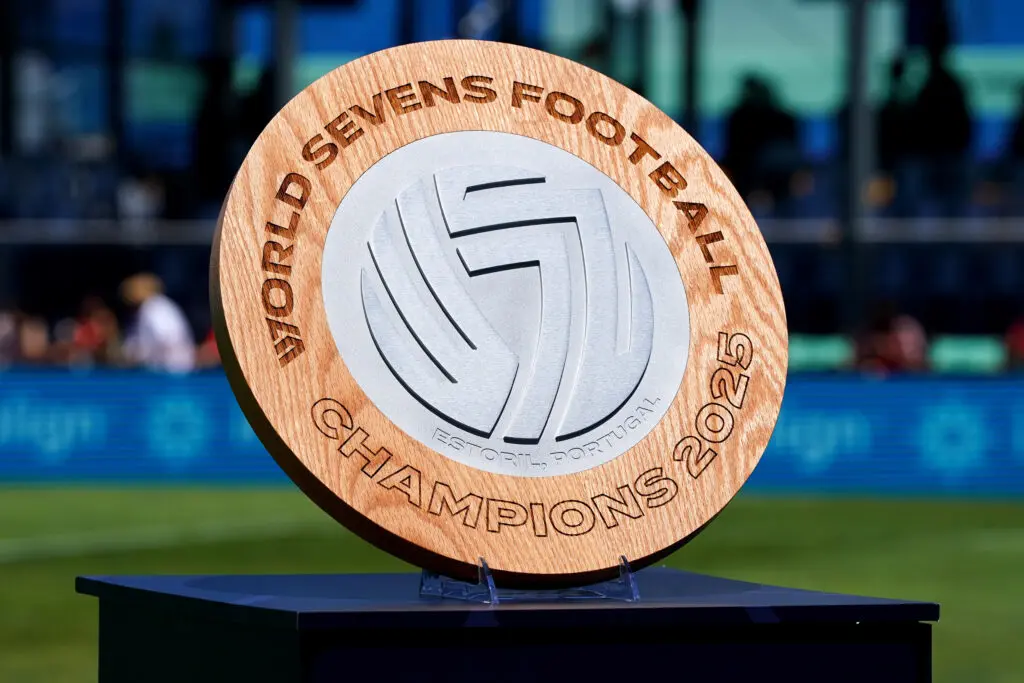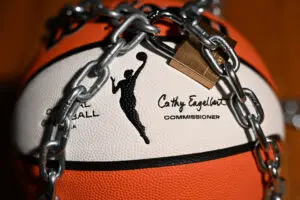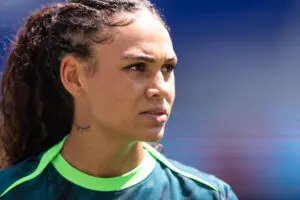On Sunday night, the college basketball season came to a close with Stanford defeating Arizona 54-53 in the 2021 National Championship game. It was a physical, gritty, and low scoring game – the lowest scoring National Championship game since 2010.
From start to finish, this was a defensive tournament. In the seven post-Sweet 16 games, only one team scored more than 70 points. And defense is exactly what the National Championship came down to, with Stanford holding Arizona to 28.3% from the field and Aari McDonald to 5-21.
Stanford won with a team effort, but there were plenty of impressive individual performances to go around this tournament. From 30-point scoring efforts to shot-blocking defensive anchors, this is our 2021 All-Tournament Team:
Paige Bueckers, Guard, UConn
With 1:30 left against Arizona, Paige Bueckers came off a screen and nailed a three-pointer two steps behind the three point line. “Don’t go away yet!” ESPN announcer Ryan Ruocco yelled into the microphone. Forget that the Huskies trailed by five points in the Final Four. Forget that Bueckers was a freshman. Forget that she had shot just 4-12 up until that point. Behind Bueckers, UConn could come back to win this thing.
They didn’t come back to win, but Ruocco’s reaction was a testament to Bueckers’ poise, her patience, and her performance all tournament. Despite her age and the circumstances, every game felt within reach with Bueckers on the floor.
What makes Paige Bueckers so great? It’s the swag for @s10bird 😤 pic.twitter.com/YHPEO3vpn4
— ESPN (@espn) April 2, 2021
Her shining moment came in UConn’s Elite Eight matchup versus Baylor, a game in which she dropped 28 points – the second-most Baylor allowed to an opposing player all season. Despite three freshmen playing major minutes, Bueckers led this relatively inexperienced UConn team to the Final Four with averages of 21.6 points per game, 6.4 rebounds, and 4.4 assists.
Aari McDonald, Guard, Arizona
You could go on and on about Aari McDonald’s play during March Madness. It was hands down the best performance by any player in the tournament and, probably, the best stretch of games in her entire career. She single-handedly willed the Arizona Wildcats to a NCAA championship appearance. It wasn’t just the program’s first trip to the title game – it was their first time making it out of the Sweet 16. All behind the speedy McDonald.
AARI MCDONALD IS ON 🔥@ArizonaWBB goes up by nine. #WFinalFour pic.twitter.com/IHkGMvogWP
— ESPN (@espn) April 3, 2021
McDonald’s success came down to her ability to make threes. In regular season games where McDonald made three or more three-pointers, the Wildcats went 5-0. During the NCAA tournament games, McDonald made three or more three-pointers in each of Arizona’s victories over Texas A&M, Indiana, and UConn. It added a whole different dimension to her game. When defenders backed up, she nailed the jumper. When defenders stepped up, she blew by them – and there’s not a single player in the country who can keep up with McDonald.
On a smaller note, it was also one of the best rebounding stretches of McDonald’s career. After logging zero rebounds in the opening round, she averaged 7.4 rebounds per game over the next five games – including two double-doubles. Often undersized, everyone on the Wildcats had to attack the glass – and that started with McDonald.
Haley Jones, Guard, Stanford
Haley Jones’ job was to inbound the ball. But when Lexie Hull missed the layup, the ball trickled out from a scrum of rebounders. With 35 seconds left in the clock, Jones scooped it up and hastily fired it away. This long, contested mid-range jumper would put Stanford ahead by one point, and send them to the National Championship game.
MADNESS!
— ESPN (@espn) April 3, 2021
HALEY JONES FOR THE LEAD!!!! #WFinalFour pic.twitter.com/cYPEY6Cj9c
Two days later, she would make another game-deciding shot against Arizona. With a little more than two minutes remaining, Jones would power through the defense for an and-one bucket, putting the Cardinal up by four, and sealing their championship victory.
Those were the two biggest shots of the entire tournament.
But Jones’ impressive postseason performance included more than just those two buckets. As Stanford’s leading scorer Kiana Williams struggled, combining for 13 points in the entire Final Four, Jones emerged as the team’s go-to playmaker, averaging 20.5 points per game over that same span. She posted up smaller players, handled the ball in the half-court, and went 5-8 from beyond the arc, after making just one three-pointer the entire regular season. When Stanford needed a bucket, it was Jones who stepped up.
Christyn Williams, Guard, UConn
Paige Bueckers stole the headlines, but one could argue that Christyn Williams actually outperformed Bueckers during March Madness. After scoring 11 and 13 points to start the tournament, Williams would finish it with three straight 20-point games, the longest streak of her career. That included a 27-point outburst against Iowa, a game in which Williams looked like the best player on the floor – a floor that included both Caitlin Clark and Paige Bueckers. Against Arizona, Williams was the only player who could consistently find her shot, scoring 26 points on 7-17 from the field.
🗣 Christyn Williams is a certified bucket
— SportsCenter (@SportsCenter) March 27, 2021
27 points and counting. pic.twitter.com/xkuk01Wdjc
Williams’ ability to explode to the basket added a whole different dimension to the UConn offense. And, as we saw, an aggressive Christyn Williams is one of the best scorers in the entire country.
Cameron Brink, Forward, Stanford
How can someone who averaged just 19.5 minutes per game and nine points make the All-Tournament team? There’s no question that Zia Cooke, Moon Ursin, NaLyssa Smith and Lexie Hull all deserve spots on this list. But Cameron Brink deserves her spot as well, because without her, Stanford wouldn’t be celebrating a championship right now.
DENIED by Cameron Brink!
— espnW (@espnW) April 2, 2021
It's a close one between South Carolina and Stanford on ESPN 📺 pic.twitter.com/EdvkTZQ6Pb
Stanford rode their defense to a third NCAA title, and that defense revolved around the rim protection of Brink. Whenever Brink came onto the floor, the game felt a little different. The opposing team’s drivers grew a little more hesitant, while their bigs were less efficient. Take Stanford’s Sweet 16 matchup against Missouri State. Despite only logging just 10 minutes, Brink recorded five blocks, swatting away 45.5% of the opponent’s two-point shots when she was on the floor. Over the course of the tournament, Brink averaged four blocks per game. Against South Carolina, she had six, and every one of them counted.
When Brink wasn’t blocking shots, she was misdirecting them, or at least forcing ball handlers into pull-up mid-range shots. The most prominent example was Aari McDonald, who shot just 1-12 on two-pointers against the Cardinal. Cameron Brink may have only played half of the matchup, but she set the tone defensively, each and every game, for the eventual national champs.
